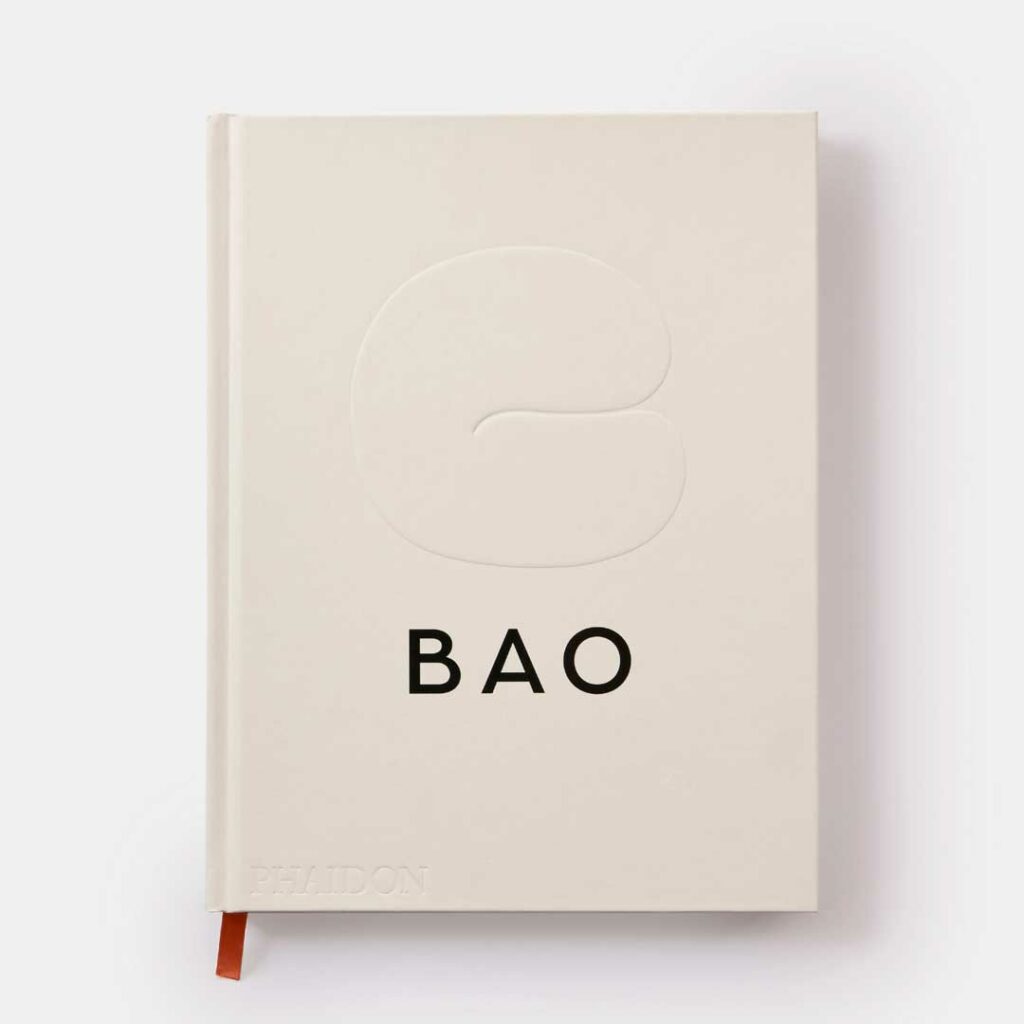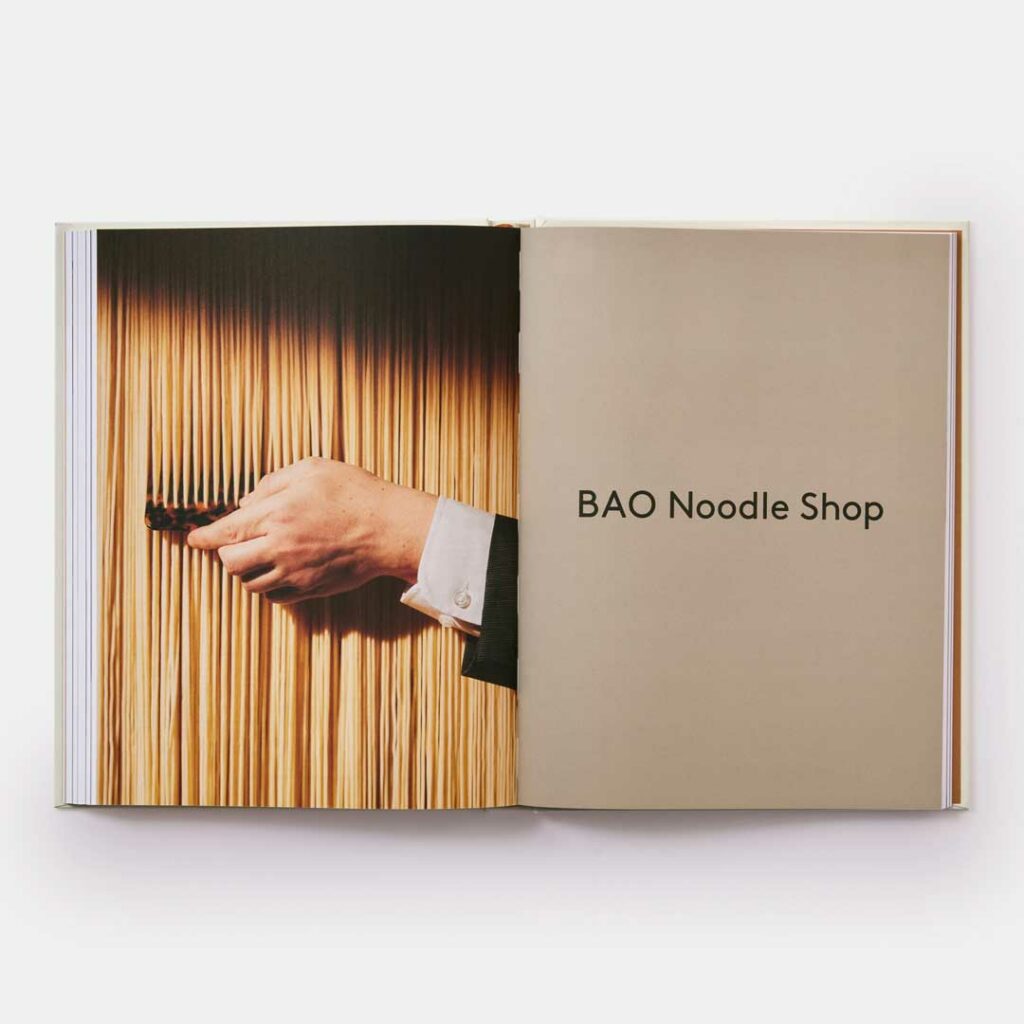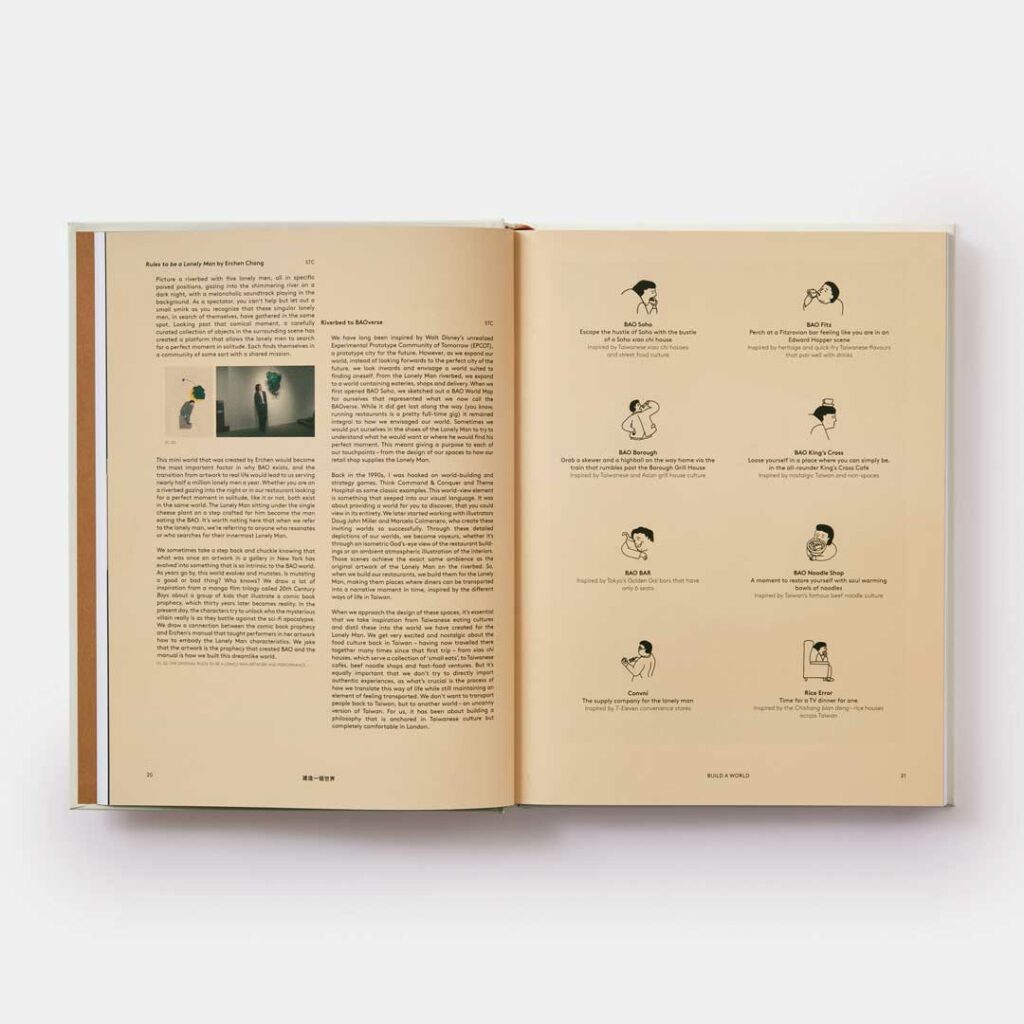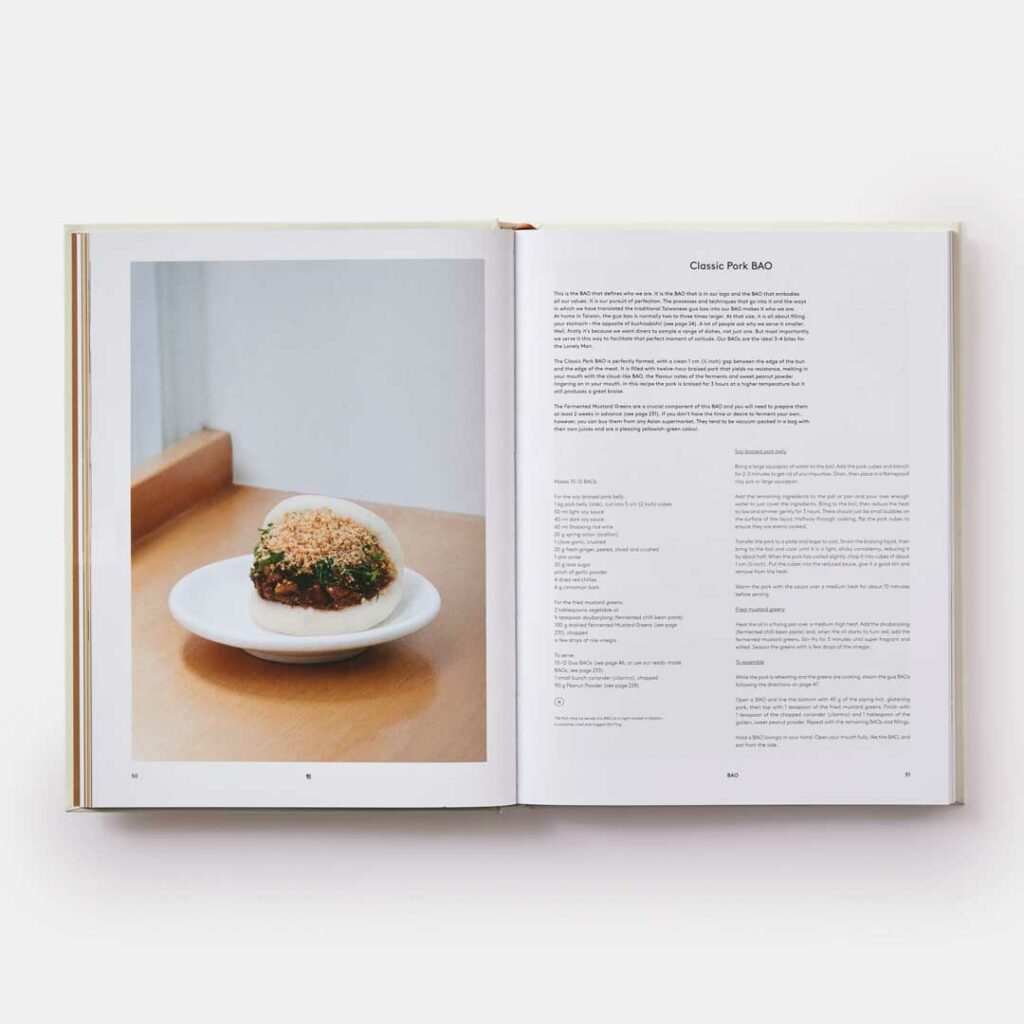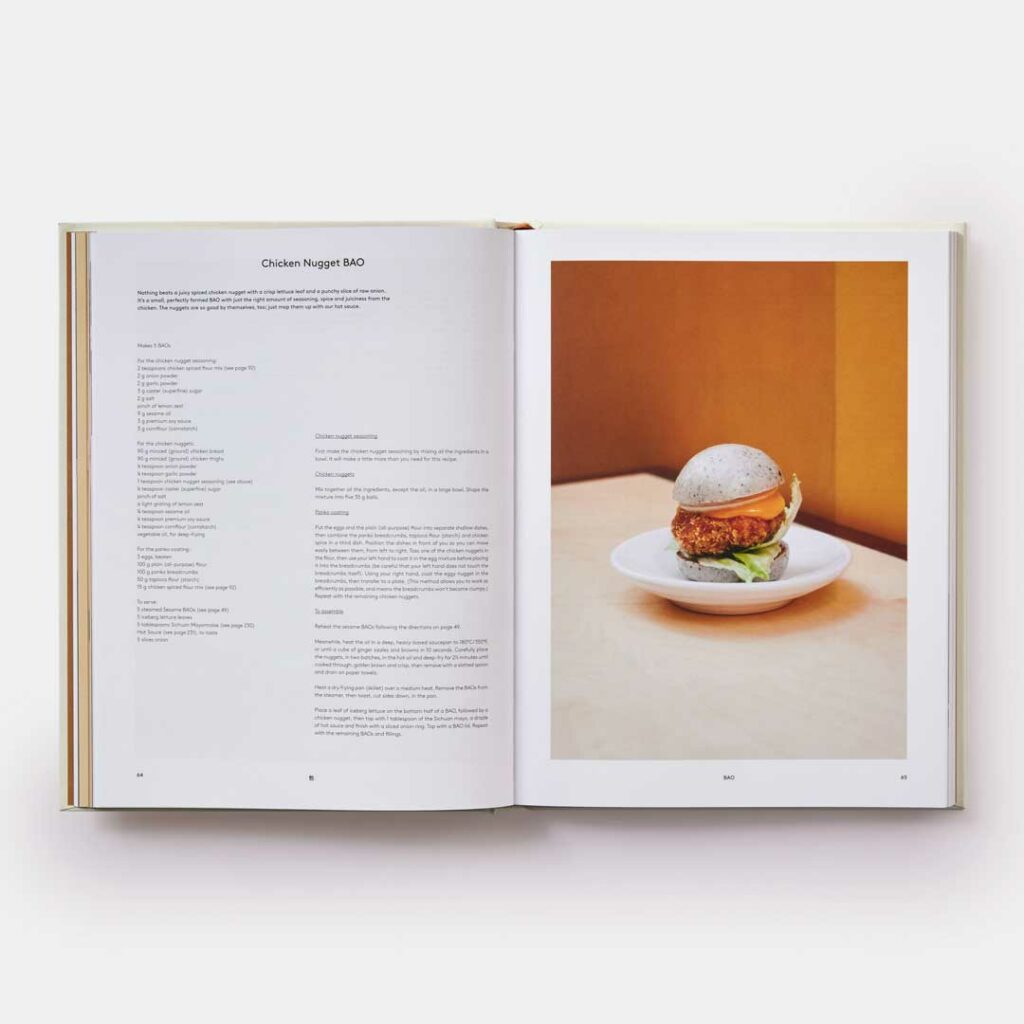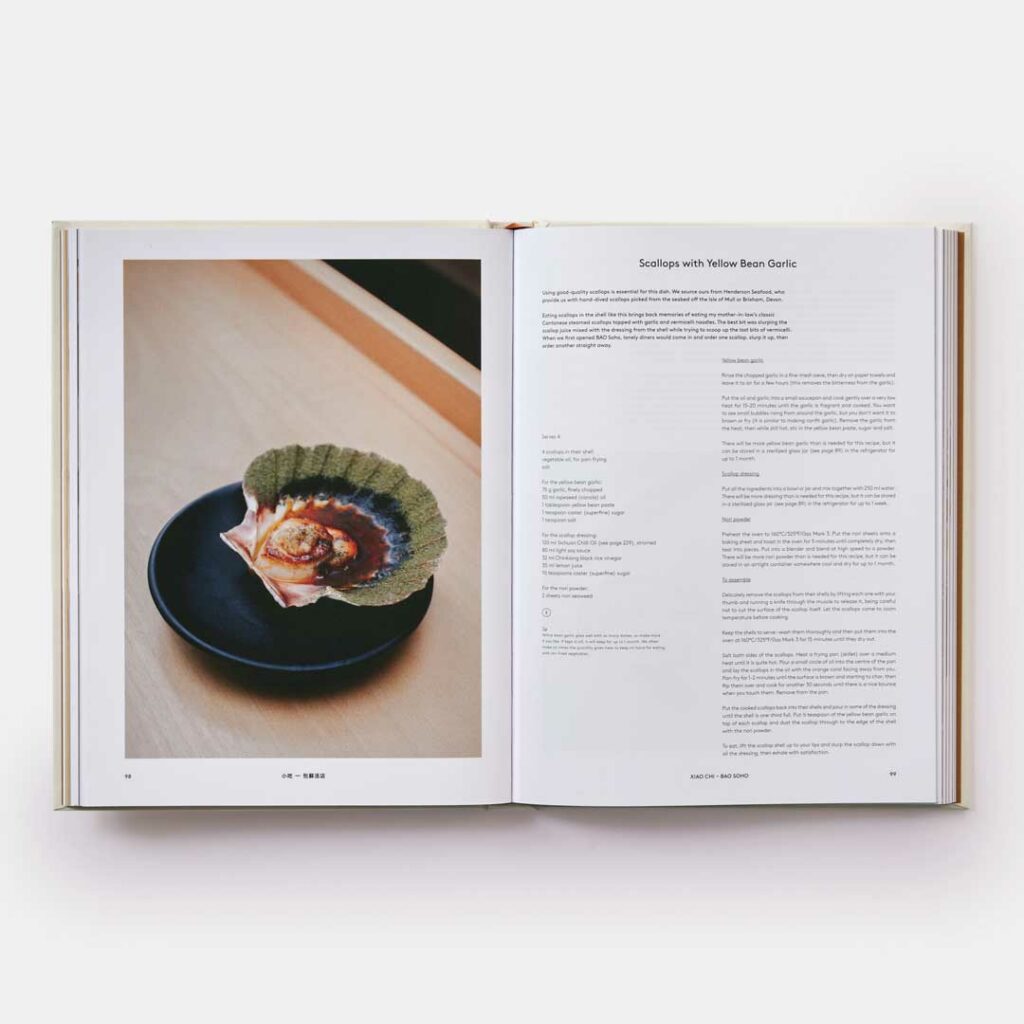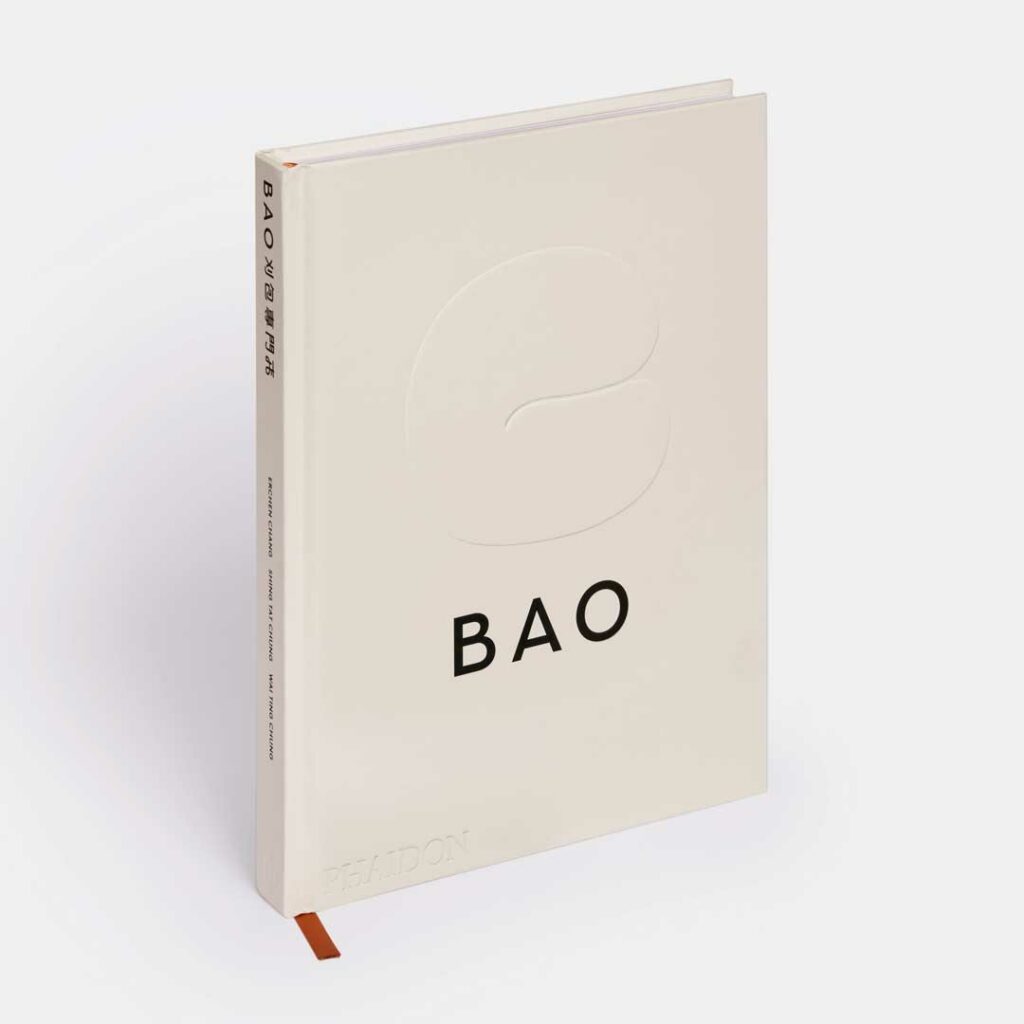Excerpt from BAO London’s restaurant cookbook by chefs Erchen Chang, Shing Tat Chung, and Wai Ting Chung, published by Phaidon.
This is the BAO that defines who we are. It is the BAO that is in our logo and the BAO that embodies all our values. It is our pursuit of perfection. The processes and techniques that go into it and the ways in which we have translated the traditional Taiwanese gua bao into our BAO makes it who we are. At home in Taiwan, the gua bao is normally two to three times larger. At that size, it is all about filling your stomach – the opposite of kuchisabishii (see page 24). A lot of people ask why we serve it smaller. Well, firstly it’s because we want diners to sample a range of dishes, not just one. But most importantly, we serve it this way to facilitate that perfect moment of solitude. Our BAOs are the ideal 3-4 bites for the Lonely Man.
The Classic Pork BAO is perfectly formed, with a clean 1 cm (½ inch) gap between the edge of the bun and the edge of the meat. It is filled with twelve-hour braised pork that yields no resistance, melting in your mouth. In this recipe the pork is braised for 3 hours at a higher temperature but it still produces a great braise.
The Fermented Mustard Greens are a crucial component of this BAO and you will need to prepare them at least 2 weeks in advance (see page 231). If you don’t have the time or desire to ferment your own, however, you can buy them from any Asian supermarket. They tend to be vacuum-packed in a bag with their own juices and are a pleasing yellowish-green colour.
Makes 10-12 BAOs
For the soy-braised pork belly:
1 kg pork belly (side), cut into 5 cm (2 inch) cubes
50 ml light soy sauce
40 ml dark soy sauce
60 ml Shaoxing rice wine
20 g spring onion (scallion)
1 clove garlic, crushed
20 g fresh ginger, peeled, sliced and crushed
1 star anise
20 g rock sugar
pinch of garlic powder
4 dried chillies
6 g cinnamon bark
For the fried-mustard greens:
2 tablespoons vegetable oil
½ teaspoon doubanjiang (fermented chilli bean paste)
100 g drained Fermented Mustard Greens (see page 231), chopped
a few drops of rice vinegar
To serve:
10-12 Gua BAOs (See page 46, or use our ready-made BAOs, see page 233)
1 small bunch coriander (cilantro), chopped
90 g Peanut Powder (see page 228)
The first time we served this BAO at a night market in Dalston, a customer cried and hugged Wai Ting.
Soy-braised pork belly
Bring a large saucepan of water to the boil. Add the pork cubes and blanch for 2-3 minutes to get rid of any impurities. Drain, then place in a flameproof clay pot or large saucepan.
Add the remaining ingredients to the pot or pan and pour over enough water to just cover the ingredients. Bring to the boil, then reduce the heat to low and simmer gently for 3 hours. There should be just small bubbles on the surface of the liquid. Halfway through cooking, flip the pork cubes to ensure they are evenly cooked.
Transfer the pork to a plate and leave to cool. Strain the braising liquid, then bring to the boil and cook until it is a light, sticky consistency, reducing it by about half. When the pork has cooled slightly, chop it into cubes of about 1 cm (½ inch). Put the cubes into the reduced sauce, give it a good stir and remove from the heat.
Warm the pork with the sauce over a medium heat for about 10 minutes before serving.
Fried mustard greens
Heat the oil in a frying pan over a medium-high heat. Add the doubanjiang (fermented chilli bean paste) and, when the oil starts to turn red, add the fermented mustard greens. Stir-fry for 5 minutes until super fragrant and wilted. Season the greens with a few drops of the vinegar.
To assemble
While the pork is reheating and the greens are cooking, steam the gua BAOs following the directions on page 47.
Open a BAO and line the bottom with 45 g of the piping-hot, glistening pork, then top with 1 teaspoon of the fried mustard greens. Finish with 1 teaspoon of the chopped coriander (cilantro) and 1 tablespoon of the golden, sweet peanut powder. Repeat with the remaining BAOs and fillings
Hold a BAO lovingly in your hand. Open your mouth fully, like the BAO, and eat from the side.
More recipes from the BAO London Restaurant Cookbook
More about the BAO London Restaurant Cookbook by Phaidon
Indulge in the flavors of Taiwanese cuisine with BAO London’s inaugural cookbook from esteemed publisher Phaidon. Uncover 100 of the restaurant’s signature recipes, including their famous pork bao buns, mouthwatering noodle dishes, crispy fried chicken, and more, all with stunning visuals and detailed instructions.
Buy now. Free shipping on all orders
